Lesson Title: Creating and Managing Purchase Requisitions in SAP ERP
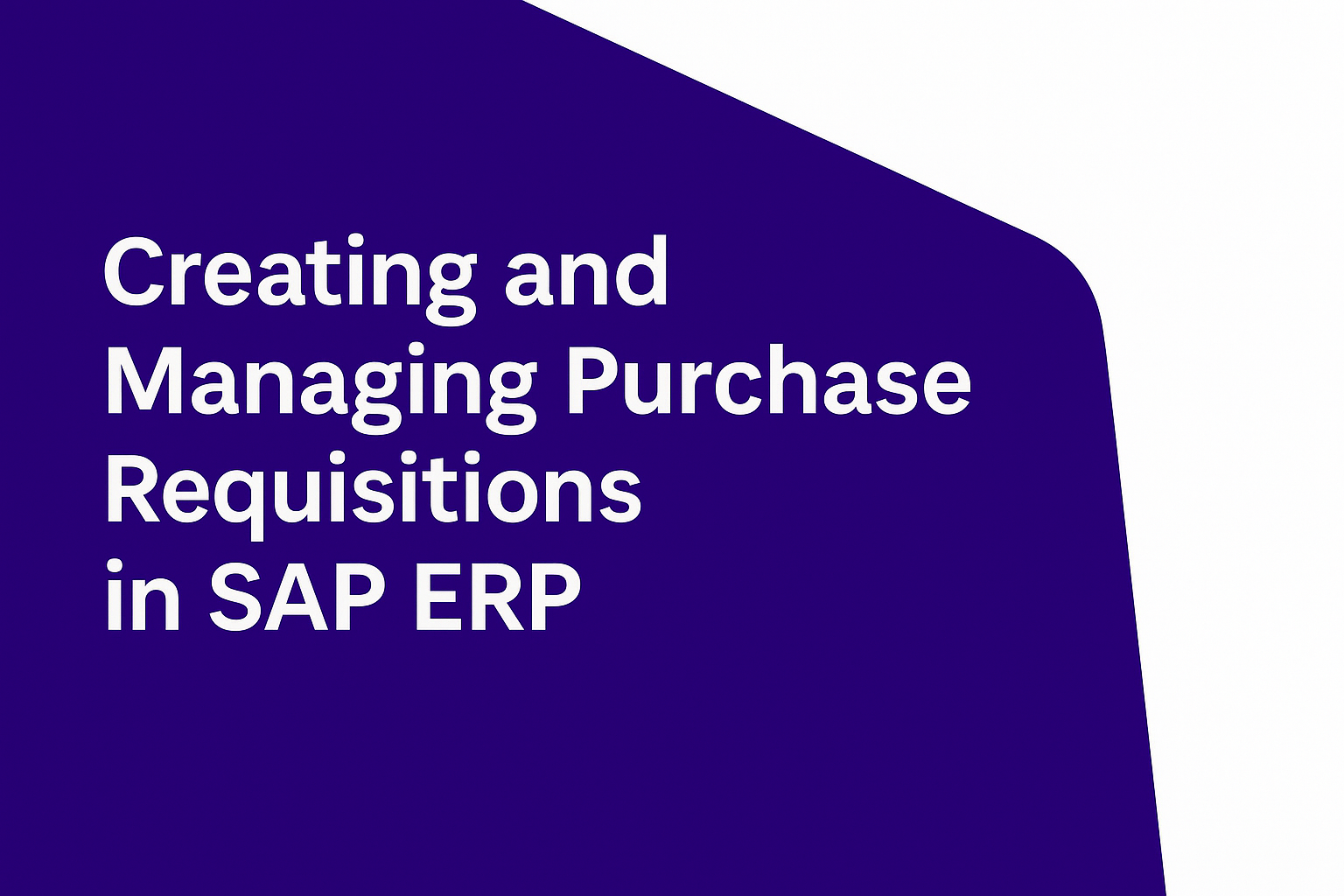
Lesson Description:
In this guided session, you’ll gain practical experience creating purchase requisitions (PRs) within SAP ERP, a fundamental step in procurement workflows. You’ll learn how to input key procurement details, distinguish between stock and consumable items, assign account categories, and connect purchase requests to appropriate cost centers and financial accounts.
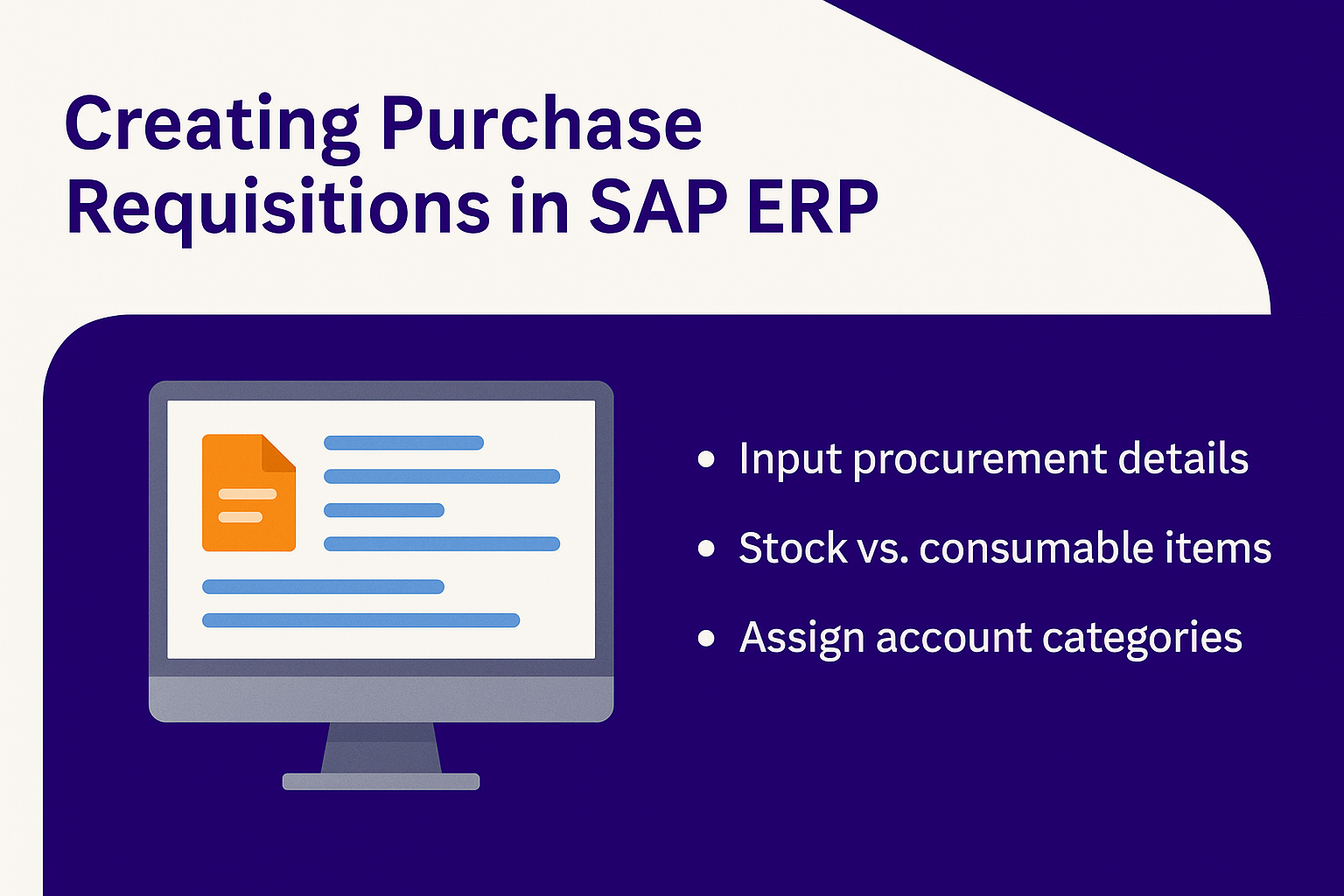
To illustrate this clearly, consider a scenario involving Pepsi. Suppose a Pepsi bottling plant introduces a new bottle design requiring specialized gaskets. Engineering needs immediate samples for testing, while production plans necessitate bulk ordering. Accurately structured PRs in SAP ensure immediate needs and future inventory requirements are clearly communicated, tracked, and approved seamlessly within a single request.
As you explore this lesson, reflect on your organization’s processes: Could more structured requisitions help prevent delays, miscommunications, or inventory issues?
Lesson Learning Objectives:
-
Accurately create purchase requisitions for both stock and consumable items.
-
Assign appropriate account assignment categories to items.
-
Link consumable items directly to cost centers and financial accounts.
-
Understand the downstream impacts of accurate purchase requisition creation on procurement efficiency and financial control.
Terminology:
-
Purchase Requisition (PR): Internal request to procure goods or services.
-
Account Assignment Category: Defines whether an item is stocked or directly expensed.
-
Cost Center: Departmental account tracking incurred expenses.
-
Stock Item: Material intended for inventory management and storage.
-
Consumable Item: Material directly expensed upon procurement, not stocked.
-
General Ledger (GL) Account: Financial account recording specific transactions.
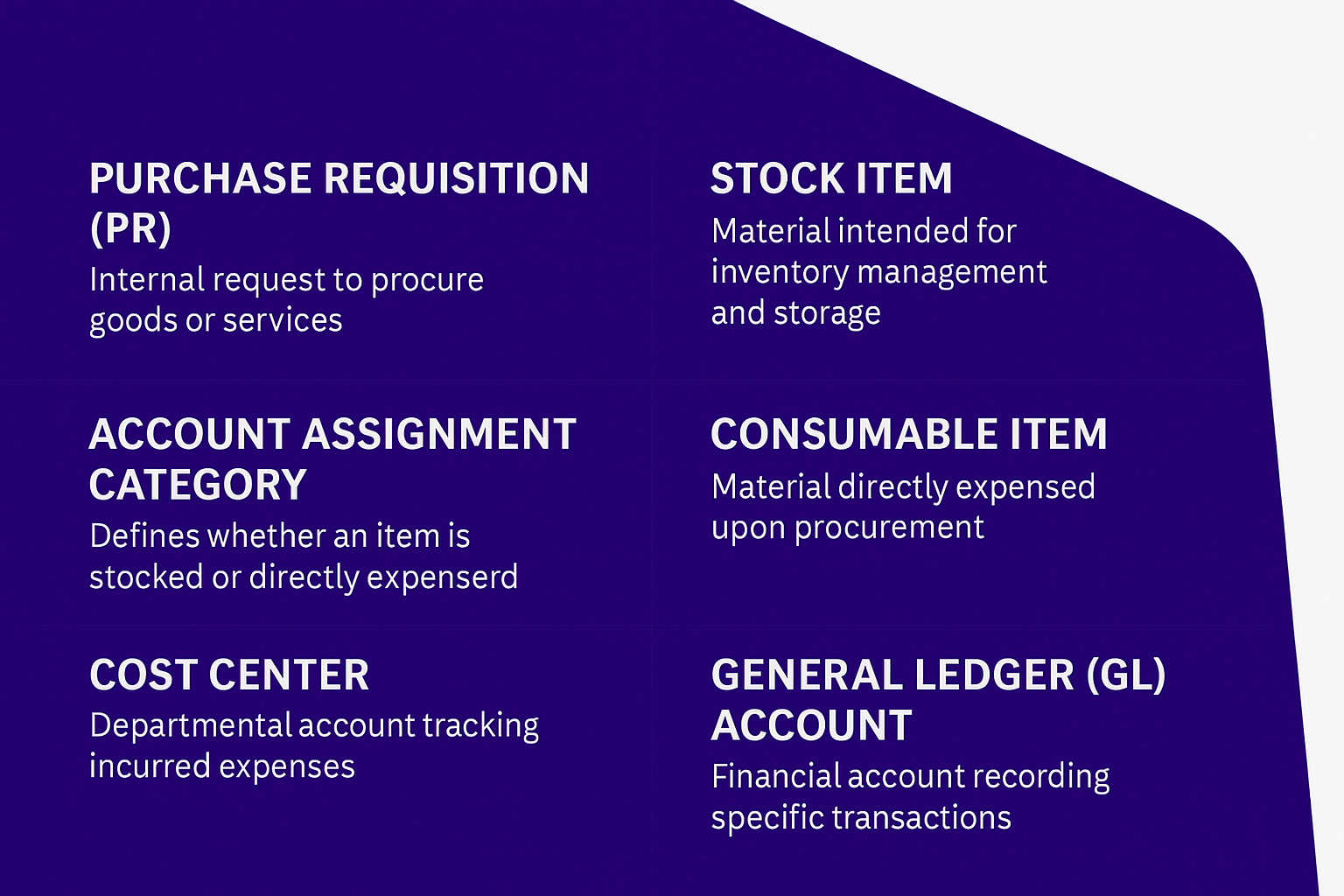
Lesson Key Points:
✅ Navigating to the Purchase Requisition Screen:
Begin creating a PR by navigating from the SAP Easy Access menu:
-
SAP Easy Access → Logistics → Materials Management → Purchasing → Purchase Requisition → Create (Transaction code: ME51N).
This clear pathway ensures structured access and accurate requisition creation.
✅ Entering Purchase Requisition Details for Stock Items:
Clearly enter essential procurement details for stock items in the PR:
-
Material Number: Unique identifier for accurate material tracking.
-
Quantity: Total units required.
-
Delivery Date: Date by when materials should be received (current date + 1 week).
-
Plant Number: Location receiving or storing the material.
-
Account Assignment Category: Leave blank, indicating inventory stocking.
Correctly identifying these details ensures seamless inventory management and procurement clarity.
✅ Entering Purchase Requisition Details for Consumable Items:
For consumable (direct-use) materials, explicitly distinguish them from stock items:
-
Material Number: Same as stock item if applicable, indicating same material.
-
Quantity: Specify units required for direct use.
-
Delivery Date: Align with the stock item (current date + 1 week).
-
Plant Number: Specific location receiving and directly consuming material.
-
Account Assignment Category: Enter “K,” clearly marking it as consumable, charged directly to expenses.
Using account category “K” ensures consumables are accurately expensed rather than inventoried.
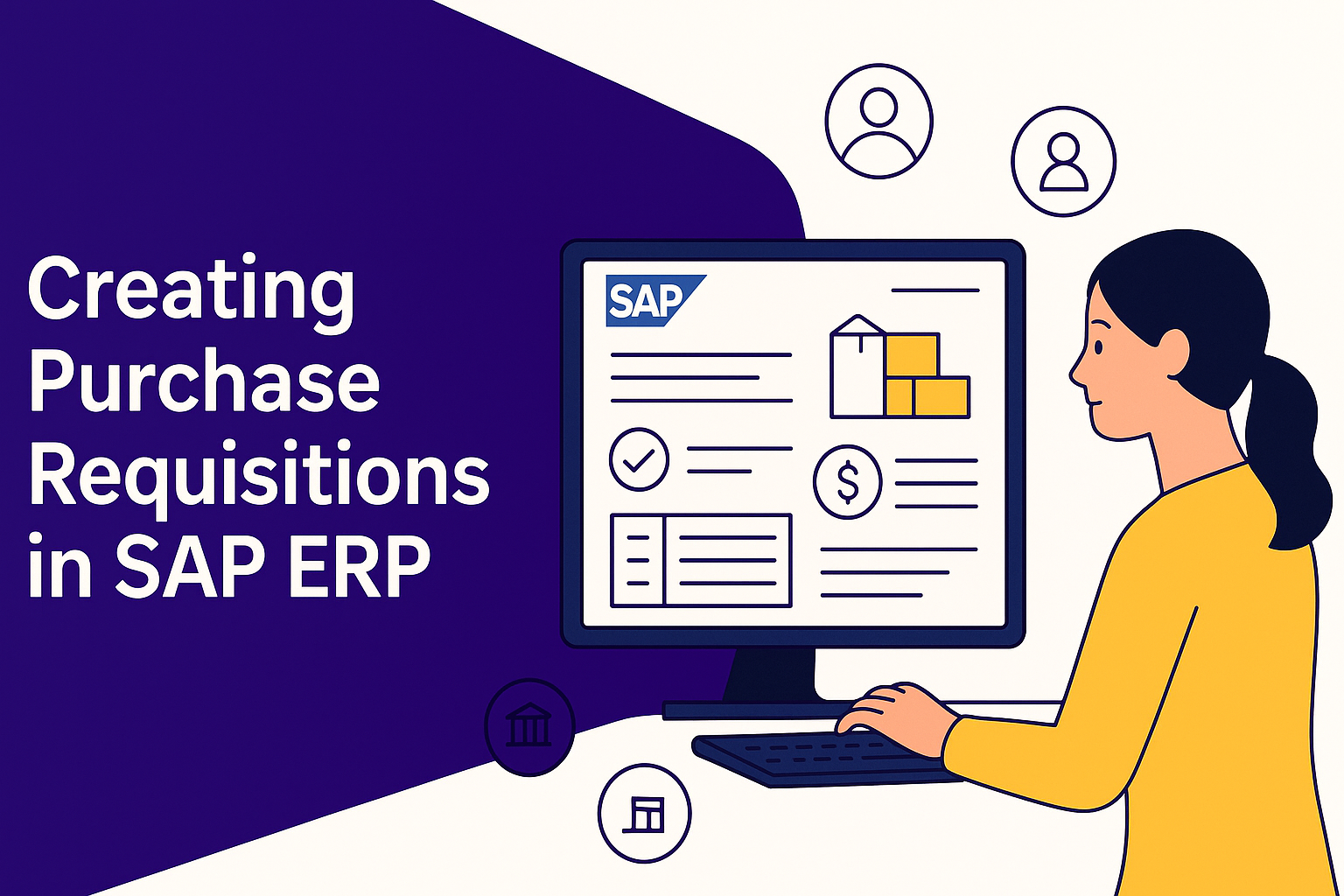
✅ Additional Account Assignment Details (Consumables):
For consumable items, complete essential account assignment details clearly:
-
Account Assignment Category (K): Confirms direct expensing.
-
General Ledger (GL) Account: Financial account recording the consumable’s cost.
-
Cost Center: Specific department bearing the expense.
These additional details ensure clear cost attribution, streamlined budget management, and accurate financial tracking.
✅ Reviewing and Saving the Purchase Requisition:
Before finalizing, thoroughly review each line item in the requisition for accuracy:
-
Stock Item: Confirm blank account assignment category for inventory stocking.
-
Consumable Item: Verify “K” category and accuracy of cost center and GL account.
Once confirmed, click Save to generate a unique purchase requisition number, crucial for tracking future transactions.
✅ Pepsi Real-world Example:
Reflect again on Pepsi’s global operations:
-
Accurate PR creation avoids production delays, miscommunication, and financial errors.
-
Precise requisitions ensure timely procurement and continuity in production processes.
-
Structured PR management ensures immediate and future procurement needs are aligned, enabling operational agility.
The Pepsi example underscores the strategic value of clearly structured purchase requisitions for smooth operations.
Lesson Summary:
You have successfully learned to create structured purchase requisitions in SAP ERP, differentiating clearly between stock and consumable items. You now understand how accurate material details, account assignment categories, cost centers, and GL accounts affect procurement clarity, inventory accuracy, and financial control.
Pepsi’s scenario emphasizes how structured PRs impact real-world operational efficiency. A clearly documented requisition prevents costly delays and ensures procurement aligns accurately with operational and financial goals.
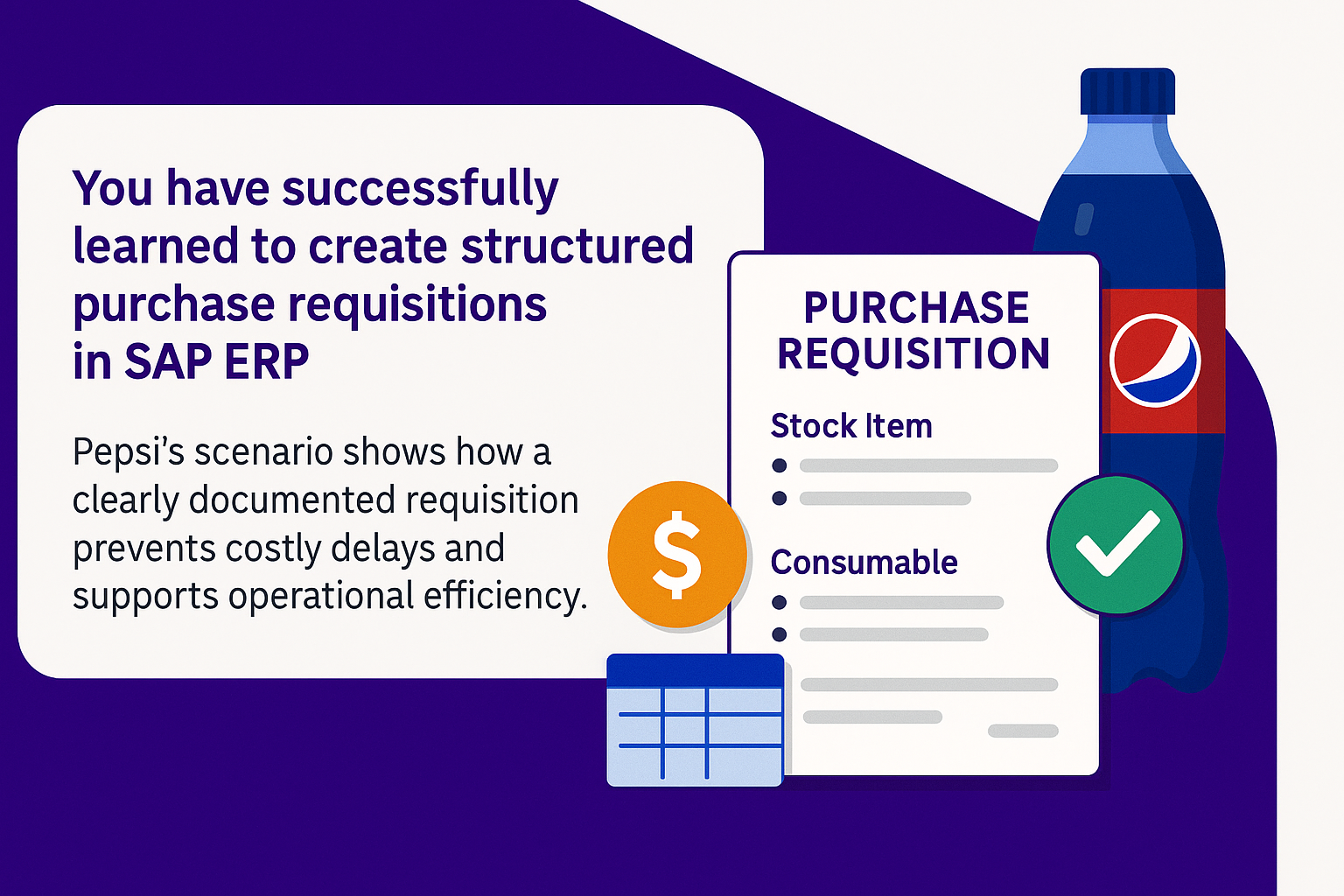
Lesson Takeaways:
-
Accurate purchase requisitions streamline procurement, inventory management, and expense tracking.
-
Clearly distinguishing between stock and consumable items enhances operational clarity and financial accuracy.
-
Structured requisition creation directly supports smooth procurement workflows and interdepartmental communication.
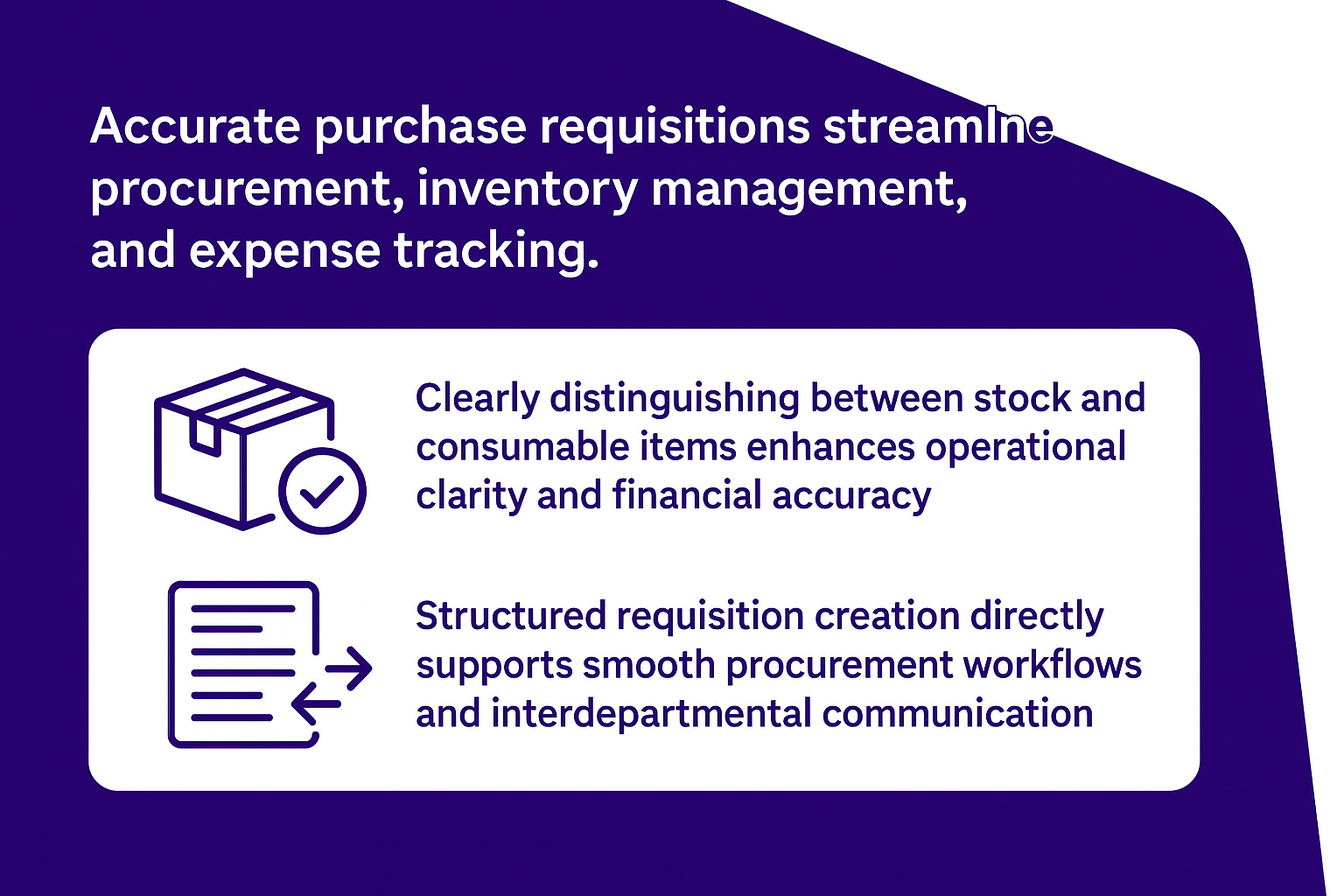
Consider your current procurement practices: Can improved requisition accuracy prevent errors or improve departmental coordination? With these skills, you’re now equipped to enhance procurement efficiency and accuracy in your organization. Keep practicing and building your expertise in SAP ERP.